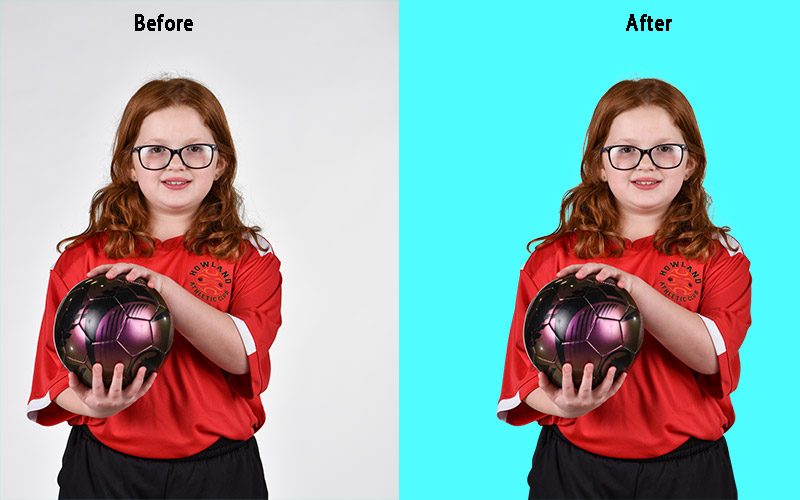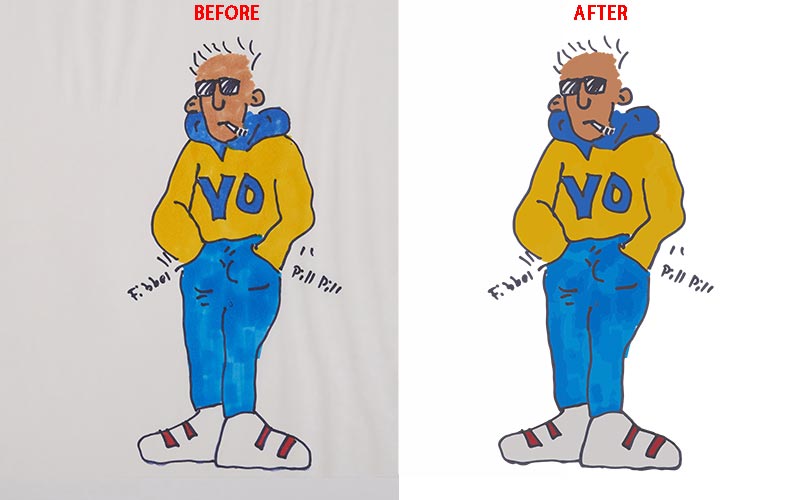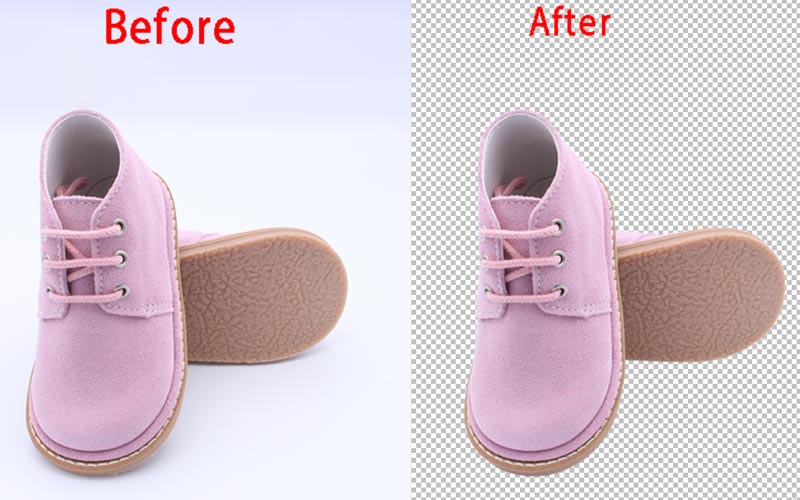Background Erase or Image Masking
Price Start from $1.49 or €1.42
Background Erase is a powerful image editing technique that meticulously removes the background from a photo, leaving the main subject isolated. This process enhances visuals, ideal for product images, portraits, and creative projects, making subjects stand out against any backdrop, creating a clean, professional look.

Background Erase or Image Masking
Background erase, an essential image editing technique, plays a pivotal role in enhancing the visual appeal and impact of photographs. It is a versatile process used in various industries and creative endeavors, ranging from e-commerce to graphic design and photography. In this comprehensive guide, we will delve into the intricacies of background erase, exploring its applications, techniques, tools, and the transformative impact it has on images.
Understanding Background Erase: Background erase, as the name suggests, involves the meticulous removal of the background from an image, leaving the main subject isolated. The goal is to create a clean, distraction-free environment for the subject, allowing it to stand out prominently against any chosen backdrop. This technique offers a wealth of creative possibilities and is widely used to enhance product images, portraits, marketing materials, and more.
Applications of Background Erase: The applications of background erase are diverse and extend to various sectors. Some key areas where background erase is employed include: E-commerce: In the highly competitive world of online retail, the quality and presentation of product images are crucial. Background erase helps in removing distracting or inconsistent backgrounds, resulting in professional, consistent product images. Portraiture: Portrait photographers often use background erase to isolate subjects from busy or distracting backgrounds, providing a clean and polished look to the photographs. Marketing and Advertising: Background erase is a valuable tool for marketers and advertisers. It enables the integration of product images seamlessly into marketing materials, creating eye-catching visuals for advertisements and promotional campaigns. Graphic Design: Graphic designers frequently use background erase to manipulate images and create custom compositions. It allows for the extraction of objects and elements for use in various design projects. Art and Creative Projects: Artists and designers use background erase to unlock their creativity. By isolating subjects or objects, they can create unique compositions and digital artwork. Real Estate: In the real estate industry, property images often benefit from background erase to improve the visual appeal of listings. Backgrounds can be replaced or enhanced to create more attractive property visuals. Product Photography: Product photographers use background erase to achieve a consistent and professional look for catalog images. It helps in creating uniform backgrounds for various products. Web Design: Web designers use background erase to optimize images for websites. By removing backgrounds, images can seamlessly integrate into the website's design and layout.
Techniques for Background Erase: Background erase can be achieved through various techniques and tools. Here are some of the commonly used methods: Manual Selection: Using selection tools in image editing software, such as the Lasso tool or Pen tool, the editor manually traces the outline of the subject. Once the selection is made, the background can be deleted, leaving the subject isolated. Magic Wand Tool: This tool is used for simpler background removal tasks. It selects areas of similar color or tone, making it suitable for images with well-defined subject-background distinctions. Color Range Selection: This technique allows for the selection of a specific color range within an image. It is effective when the subject has distinct color differences from the background. Layer Masks: Layer masks enable editors to apply non-destructive background erase. By painting on the mask, the editor can reveal or hide parts of the image, providing precise control over the process. AI-Powered Tools: Artificial intelligence and machine learning technologies are increasingly being used for background erase. AI-powered tools can automatically detect and remove backgrounds, making the process more efficient.
Tools for Background Erase: The choice of tools for background erase depends on the complexity of the image and the level of precision required. Some commonly used tools include: Adobe Photoshop: Photoshop is the industry-standard image editing software that offers a range of tools for background erase, including the Magic Wand tool, Pen tool, and advanced selection techniques. GIMP (GNU Image Manipulation Program): GIMP is a free, open-source alternative to Photoshop and provides similar background erase tools. Online Background Eraser Tools: Several online tools and software platforms are designed specifically for background erase, offering user-friendly interfaces and automated background removal.
The Process of Background Erase: The process of background erase involves several steps. Here's an overview of how it's typically done: Select the Image: Start by opening the image you want to edit in your chosen image editing software. Select the Subject: Using the preferred selection tool, outline the subject or object you want to keep. Ensure that the selection accurately encompasses the subject while excluding the background. Create a Mask or Layer: Once the subject is selected, create a layer mask or duplicate the selection to isolate the subject on a separate layer. Remove the Background: Delete or hide the background layer, leaving the subject against a transparent background or a solid color. Refine Edges: Fine-tune the edges of the subject to ensure a seamless transition between the subject and the new background. This step is critical for a natural and professional look. Add a New Background: If desired, introduce a new background or backdrop behind the subject. This could be a solid color, a gradient, or a different image altogether. Adjust Lighting and Color: Make adjustments to the subject, such as lighting, color balance, and contrast, to ensure it blends seamlessly with the new background. Review and Save: Carefully review the edited image to ensure it meets your requirements. Save the final image in the desired format.
Benefits of Background Erase: Background erase offers numerous advantages that make it a valuable tool for image enhancement and manipulation: Enhanced Focus: Background erase directs the viewer's attention to the subject, eliminating distractions and improving the focus on the main element. Consistency: In e-commerce and product photography, background erase helps maintain consistency in product images, enhancing the overall brand presentation. Creativity: Graphic designers and artists can explore creative possibilities by isolating subjects and seamlessly integrating them into different contexts or compositions. Professionalism: Background erase results in professional-looking images suitable for various applications, from marketing materials to websites and advertisements. Visual Appeal: The technique significantly improves the visual appeal of images, making them more engaging and aesthetically pleasing. Customization: Background erase enables customization by allowing subjects to be placed in different environments or backgrounds to suit specific needs. Efficiency: When used with AI-powered tools, background erase can significantly reduce editing time and effort, making it more efficient. Consistent Branding: E-commerce businesses can maintain a consistent branding image across their product catalog, fostering brand recognition and trust.
Challenges and Considerations: While background erase offers substantial benefits, it also presents some challenges and considerations: Complex Backgrounds: Images with intricate or highly detailed backgrounds can be challenging to edit, requiring more time and precision. Fine Details: Maintaining fine details, such as hair or delicate objects, during background erase can be demanding and may require advanced techniques. Skill Requirement: Achieving professional results with background erase often requires a certain level of skill and experience, especially for complex images. Image Size and Resolution: Working with high-resolution images can be resource-intensive and may require adequate system resources for smooth editing. Workflow Integration: Incorporating background erase into existing workflows and understanding how it fits into the larger project can be a consideration for businesses and professionals.
The Future of Background Erase: As technology and software continue to evolve, the future of background erase holds exciting possibilities. Some trends and developments to look out for include: AI Advancements: AI and machine learning technologies are likely to play a more significant role in automating background erase processes. AI-driven tools are expected to become more accurate and user-friendly. Cloud-Based Solutions: Cloud-based image editing platforms will provide greater accessibility and collaboration options for background erase tasks. Real-Time Editing: The integration of real-time background erase capabilities into live video and streaming applications is anticipated, offering immediate background removal for video conferencing and content creation. Enhanced Portability: Mobile apps and tools for background erase are expected to become more sophisticated and widely used. Virtual Reality: As virtual and augmented reality technologies advance, background erase will play a crucial role in creating immersive environments and experiences. Cross-Platform Compatibility: Enhanced compatibility and interoperability between different image editing software will make it easier for users to work with background erase across platforms.
In Summary: Background erase is a fundamental image editing technique that transforms the visual impact of photographs and images across various industries and creative endeavors. Whether it's creating professional product images, enhancing marketing materials, or exploring artistic possibilities, the meticulous process of background erase offers unparalleled creative freedom and the ability to elevate visual content. As technology continues to advance and AI-driven tools become more prevalent, background erase is poised to become more accessible, efficient, and versatile. It will remain an essential tool for achieving consistent and eye-catching visuals that captivate and engage audiences in a visually driven world.


